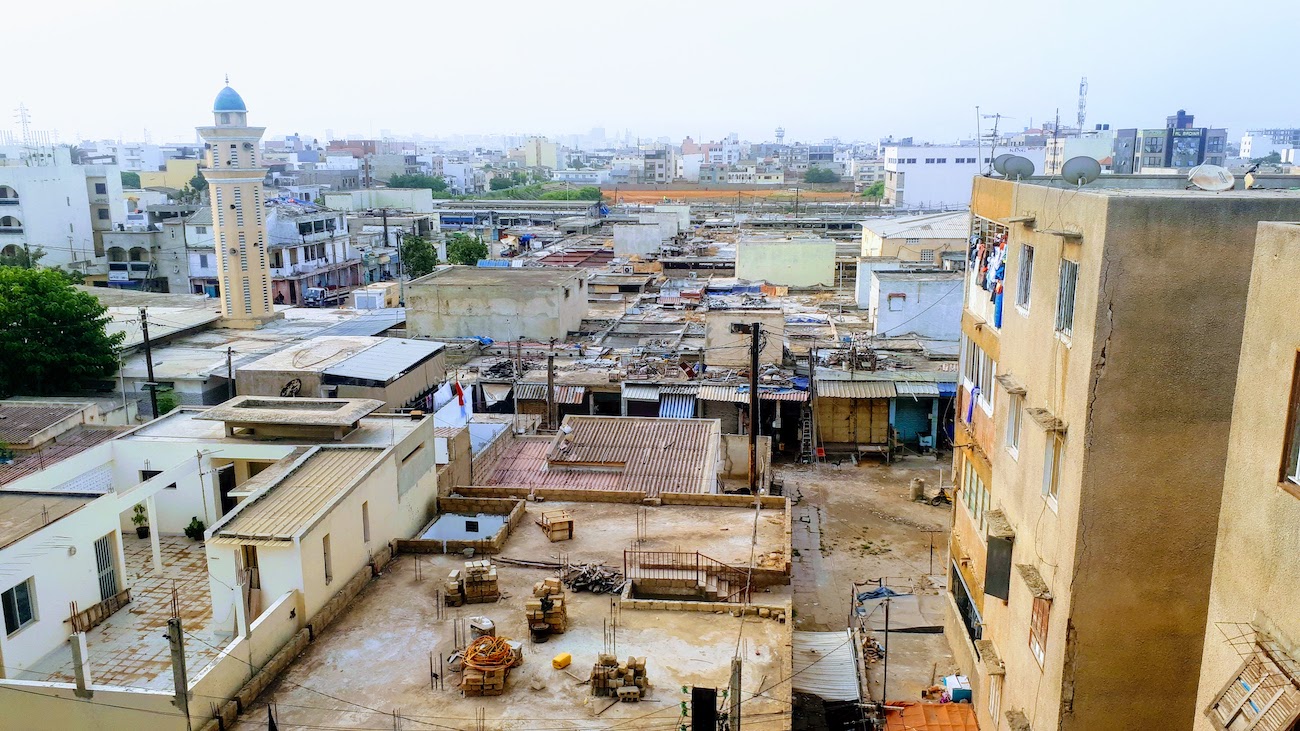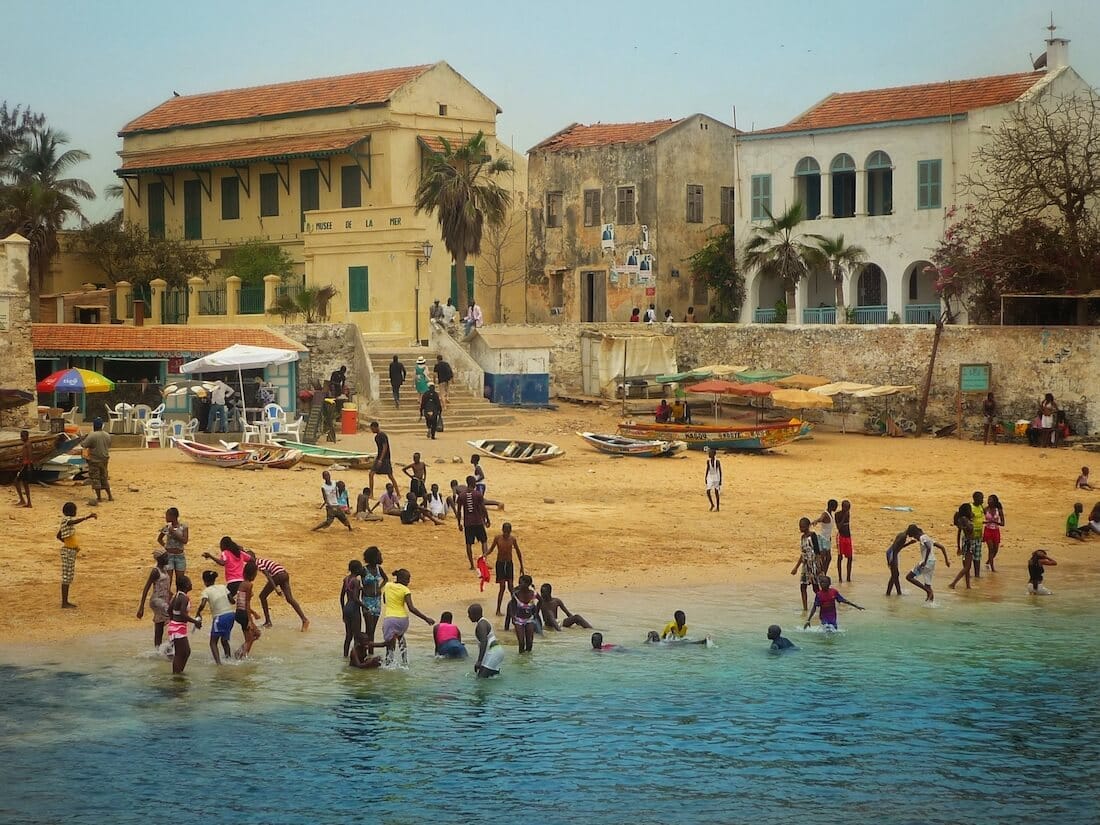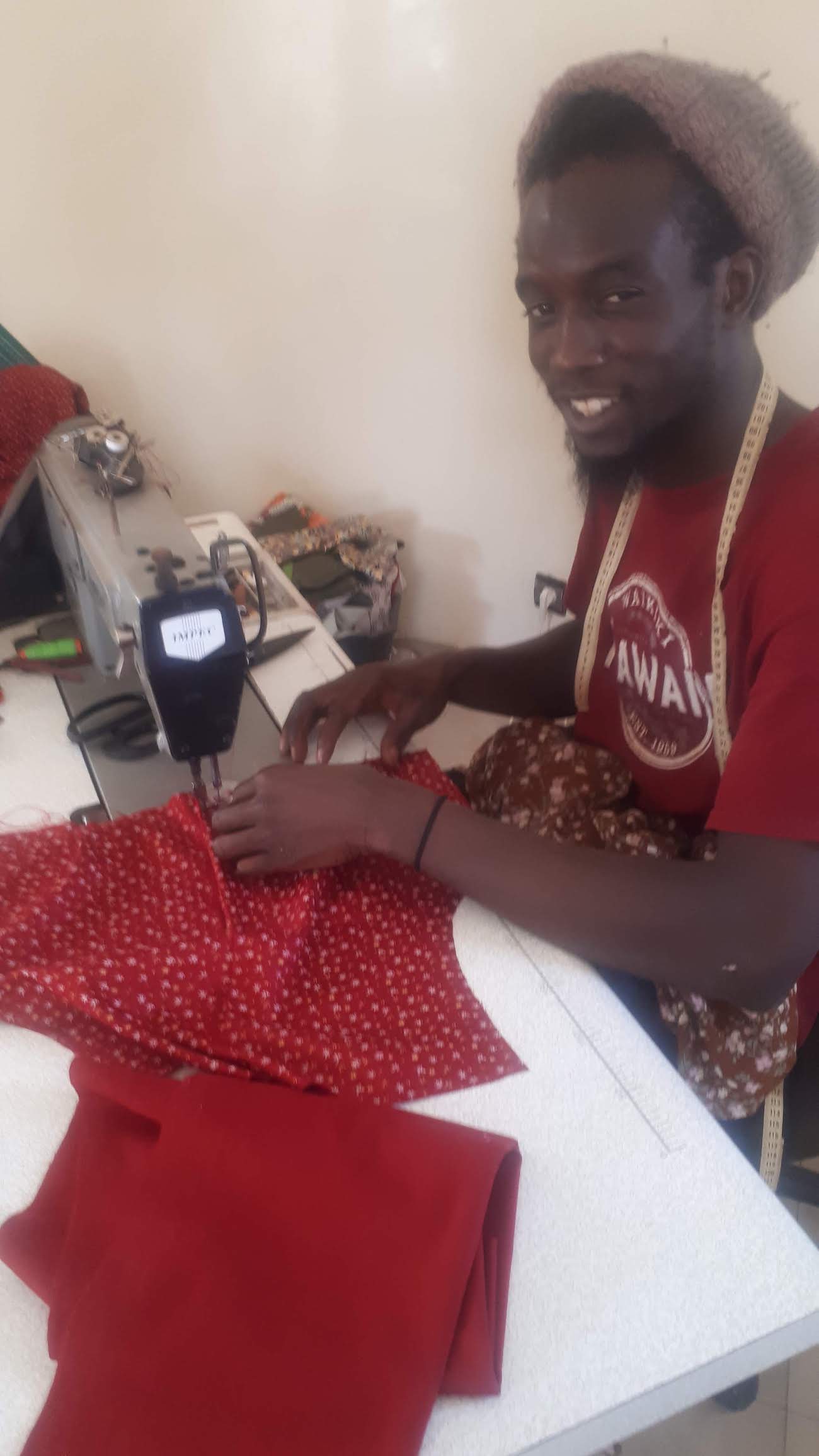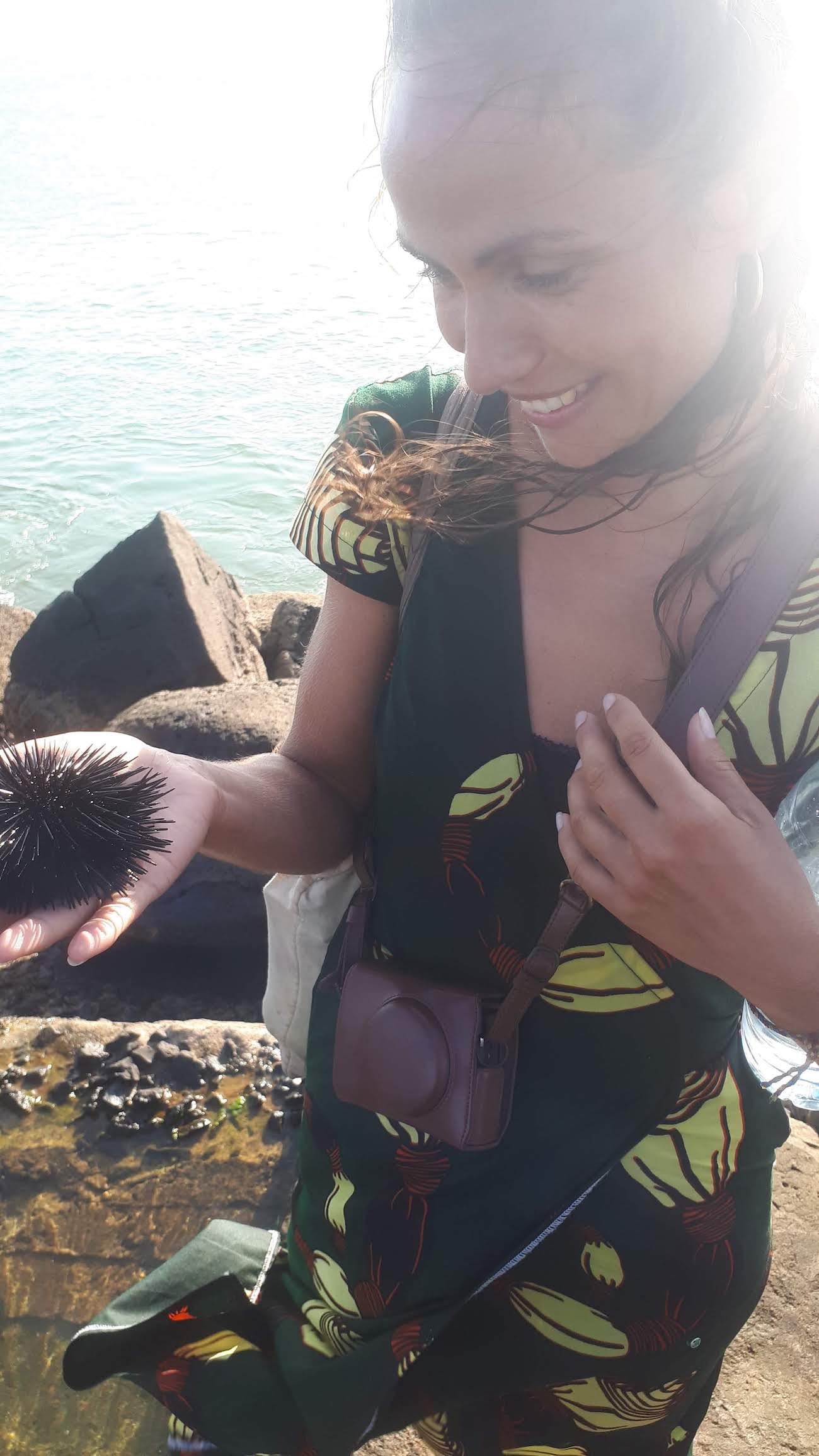A bustling city, exciting surf & tons to do
Dakar is a bustling, exciting metropolis that will make you want to explore Senegal. The capital of this African country has over one million inhabitants, and it’s only growing as more people move into Dakar from all around the region in search of opportunities. Dakar’s bustling vibes are displayed at every turn. Food vendors selling fried doughnuts covered with honey-waxed peanut butter are served during breakfast until late-night DJ sessions start soon after sunset!
Sand colors dominate the bustling metropolis. At the same time, it has bright hues and decorations throughout its landscape–whether in lavish buses or carefully tailored clothes worn on people’s bodies (or even artwork). The city seems like an exploration of color: every splash looks like someone went out just for this purpose!
- Activities 100%
- Authentic City Life 75%
- Culture 80%
- Adventure 75%
For me, Dakar was love at second sight. Dakar is the capital of contradictions. Traditional and modern, modest yet elegant. But also loud, dusty, and partly incredibly dirty. Dakar itself seems to be still under construction or already falling apart. One wonders why the city is so neglected. But Dakar became a place of longing, and if you give the metropolis a little time and look behind the facades, you will quickly realize what makes the city so unique.
If you ever feel like taking a break: Dakar’s three sides are lined with beaches that invite surfers to ride the waves of the Atlantic.
Feel the beat
What better way to spend your time in Dakar than with music and dancing all night? The people of Senegal are deeply religious, but they also love having fun. A lot is going on that will make you want to move along the streets. Music plays an important role, especially in Senegalese hip hop, attracting more attention from around Africa over recent years.

Dakar Plateau - Our favorite place
Take your time and spend some time at the Pleateau de Dakar. During the day you can explore the historic city center with the government district and the port area. As you leave the bustling neighborhood for the Atlantic, you’ll find jetties jutting far out into the Atlantic, inviting fishers to fish. You will discover a vast, sandy, rocky coast on the other side of the neighborhood. You can end the day on the rocky shore with one of the most beautiful sunsets in Dakar. Surrounded by happy people, the mighty ocean, and a feeling of freedom.
Île de Gorée - UNSECO woord heritage site
The small island of Gorée, located just off the coast of Dakar, has a captivating and sad history. Thousands upon thousands of enslaved people were held here before being shipped to North America. You can still see pieces left behind, such as a slave house built around 1778 with its brick walls intact today; it’s now run by an association that offers tours in French & English so you may learn more about these events that happened on what was once “Les quatre verges” (the four margins).
Today Île de Gorée is a quiet island where you can find peace at the doorsteps of Senegal’s capital. The island is car-free and very quiet. Unfortunately, sometimes too many tourists come to the island at once, so you should respect the privacy of the locals and not take pictures of the people.
Lauri took surf lessons at the Ngor Island Surfcamp. While searching for the best waves of the day by minibus or boat, we enjoyed getting to know the island.


Visit Dakar's Grand Mosque
Dakar’s Grand Mosque is one of Senegal’s most important religious sites. The mosque was built in 1964 and can accommodate up to 20,000 worshippers. It is an active site of worship and also a place of study for students of Islam.
The Senegalese people are known for their open and welcoming culture. They enjoy sharing traditions, especially those related to faith-based beliefs!
Therefore also, Non-Muslims are welcome to visit the mosque, but there are a few things to keep in mind:
Dress conservatively (cover your shoulders and knees).
Remove your shoes before entering.
Be respectful of those who are praying.
You can take pictures inside, but make sure not to use a flash.
One of the best times to visit the mosque is during Friday prayers when the courtyard is full of people worshipping together.
Pay a visit to the Dakar's colorful HLM quarter
Dakar’s HLM quarter is another cool place to visit. Here you’ll find the Presidential Palace and many other essential government buildings. The area is heavily guarded, so take your passport and dress conservatively.
The HLM Quarter is also home to Dakar’s best hotels, restaurants, and nightlife. HLM Quarter is the place to stay if you want a luxurious experience. However, if you’re on a budget, there are plenty of cheaper options in the city center.
The HLM quarter is also home to the Fabric Market, one of the best places to find fabric in Dakar. The market is full of vibrant colors and patterns; you can find everything from traditional wax print fabrics to modern prints. Bargaining skills are key here!


Get a custom dress done
If you’re unsure what to do with all the fabric you’ve bought, consider having a custom piece made by a local tailor. It is a great way to support local businesses and get something unique you’ll cherish for years to come.
By the way: Dakar prides itself on being an African fashion hub. I admired their love for fashion and print showcased in their daily wardrobe. The women and men of Senegal are always dressed to impress. Their brightly patterned wax prints perfectly represent this continent-leading style that has come so far from its even pre-colonial roots. These folkloric garments date back centuries before colonization; they were initially brought over directly after dorsals. Then, Dutch companies started making items out of colorful fabric, which became wildly popularized because people could easily recognize each symbol.
Rather than being a design feature, the colors and patterns used served an essential purpose, indicating marital status and denoting ethnic identity.
Wax prints are gorgeous and have a deep meaning and history behind them. If you’re interested in learning more about the fabric. In that case, I recommend checking out the website of The University of Ghana’s Department of Textiles, where you can find a wealth of information on wax prints and their significance in West African culture.
Monument de Rennaissance africaine
The Monument de Rennaissance Africaine, or African Renaissance Monument, is a bronze statue on top of one of the hills in Dakar. The monument is 49 meters tall and overlooks the city.
The statue was built to commemorate the 50th anniversary of Senegal’s independence from France. It is the tallest statue in Africa and one of the tallest statues in the world.
The monument has three levels:
- A base
- A middle level with an observation deck
- A top-level with a restaurant and bar
The Observation Deck offers views of Dakar and the Atlantic Ocean.
If you’re interested in learning more about Senegal’s history and culture, I recommend visiting the Museum of African Art, located in the same complex as the monument. The museum has a traditional and contemporary African art collection, library, and research center.
Plenty of shops also sell locally made goods at the monument complex. You can find anything from wood carvings to jewelry to wax print fabrics.
When planning your trip to Dakar, remember that it’s a large city with plenty to see and do. However, if you’re pressed for time, I recommend focusing on three main areas: the HLM Market, the Monument de Rennaissance Africaine, and the Museum of African Art.
Each of these places offers a unique glimpse into Senegal’s history and culture, and you’re sure to come away with some fantastic souvenirs


Go surfing
Dakar is a city that not only offers you the option to relax on its beautiful beaches but also has some great waves.
Dakar's not so "secret beach"
The “Secret Point” is not a secret anymore. The beginner-friendly beach enjoys high popularity and might have become one of Dakar’s most famous surf spots! It’s deep enough that intermediates can enjoy it, but stony beach floors mean those who want a true challenge will have to head elsewhere for their fix of waves crashing over rocks in an ocean filled with sea urchins!


Yoff district beaches
I recommend checking out Yoff District’s north coast – plenty of surf schools offer courses. The beach is also an excellent place to relax with a cool drink.
Psst: If your body is aching from too much surfing, you can rent a SUP here!
Practical travel tips for Senegal
What language is spoken in Senegal?
Several languages are spoken in Senegal, as the country is home to a large number of ethnic groups.
The official language is French, which is used in government, education and the media. Various indigenous languages are also spoken, including Wolof, which serves as a lingua franca and is spoken by a large number of people in everyday life. Other important languages are Fulfulde, Serer, Mandinka and Diola, which are spoken according to regional ethnicity.
What is the best time to travel to Senegal?
Senegal has two seasons, the rainy season and the dry season.
The best time to travel to Senegal is during the dry season, which lasts from October to April. During this time, the temperatures are warm and there is less rainfall.
The Harmattan winds, which blow over from the Sahara desert, also begin to blow at this time. These winds can make conditions hot, dry and dusty. However, they usually subside in April when the temperatures rise again.
Is there Maleria & Dengue Fever in Senegal?
Malaria, dengue fever and other tropical diseases are common, especially during the rainy season (June-September).
Tips for avoiding dengue & malaria
You should take measures to avoid being bitten by mosquitoes. It is best to sleep under a mosquito net and wear long clothes to sleep. Otherwise, you should also keep a low profile at dawn and dusk.
The health facilities in Dakar are adequate, but they are limited in the rest of Senegal.
Make sure you have sufficient travel health insurance and funds to cover the costs of medical treatment abroad and repatriation.
Is Senegal safe?
We always felt very comfortable and safe in Senegal. After dark, however, we were no longer on our own.
What is the currency in Senegal?
Public transportation in Senegal
Internet and SIM cards in Senegal
The connection is quite good in the cities, but network coverage varies greatly in rural areas. There are three telephone providers in Senegal: Orange, Free and Expresso. In general, data packages in Senegal are affordable.
Can I drink the tap water in Senegal?
The water in Senegal is not drinkable, so bring a water filter or a UV bottle.
What should I look out for on my trip?
Sunscreen: Protect marine life by wearing reef-friendly sunscreen.
Waste: Take your water filter with you not only to keep your water cold, but also to avoid plastic waste. A foldable food container and travel cutlery are also a must!
Photography: The people around Lac Rose and Île de Gorée are prone to taking photos, so be extra sensitive.
Packing list Senegal
Don’t know what to pack for your trip to Senegal? You’ll find everything you need on our packing list, from clothing and equipment to eco-friendly toiletries.
Enjoy your trip without worrying about what you’ve forgotten and immerse yourself in the culture of Senegal with the right equipment.
Places to visit in Africa
Diving in Zanzibar
Duration: at least ten days Where to Stay: Sunshine Marine Lodge or Sunshine Azure It only took one backwards roll off a wooden dhow in Matemwe for me to fall—quite literally—head over fins for Zanzibar’s reefs. I’d signed up with Dive Point Zanzibar to earn my...
Two weeks Tanzania itinerary
I’ve returned to Tanzania time and again, and this two-week itinerary brings together my favorite moments — lively markets in Dar es Salaam, game drives in Ngorongoro and the Serengeti, and lazy days on the beaches of Zanzibar or Mafia Island
Tarangire National Park
Planning a Tanzania safari? Here’s my firsthand guide to Tarangire National Park—how to get there, when to visit, where to stay, and what to pack for the ultimate elephant‑filled adventure
Diving Zanzibar
Diving in Zanzibar unlocks warm Indian-Ocean reefs brimming with turtles, reef sharks and seasonal whale-sharks—from Mnemba’s “aquarium” walls to Pemba’s drop-offs. Get my first-hand tips on the best dive sites, seasons, marine life and eco-friendly practices after earning my Open Water with **Dive Point Zanzibar**.
Day trips from Dakar
Situated on the Atlantic coast, Senegal has beautiful beaches, lagoons, and island archipelagos. Inland, there are forests, savannas, and mountains. When visiting Dakar, there are plenty of things to do and see.
Casamance | Lush Mangroves, Diola people & traditional villages
From sandy beaches to forest-covered islands, there is so much to see and do. Immerse yourself in the beat of traditional villages and soak up the culture of the fiercely independent Diola people, who have made this region their proud homeland.
Gambia’s South | Gambia’s best beaches
Gambia’s only 42-km long coastline offers the perfect beach spot for everyone. If you are looking for a party, Kololi is the place to be, but if you seek more tranquility and serenity, check out Gambia’s South.
Marrakesh | Live dream of 1001 nights
Marrakesh mesmerized me from the second we left the cab. Surrounded by “guides” eager to lead us to our Riad. Never would we have found our Riad ourselves, even though the taxi left us only about 300 m from the entrance. The unimposing door was hiding the beautifully decorated and colorful Riad. We were confronted with the incredible detail of Moroccan style. We stood there with our mouths open. Deeply impressed and taken aback by so many impressions, so much beauty.
Serekunda | Gambia’s secret capital
Serekunda is home to about 400.000 people, and it seems to burst at all seams. Serekunda is Gambia’s biggest city and has long become the economic hub. It’s not exactly pretty or relaxing, but it’s worth visiting to get a glimpse into a busy, authentic Gambian city. Serekunda is also home to Gambia’s biggest market. Serekunda offered us an authentic glimpse into urban West African culture and life!
What to wear in West Africa | Packing list
What to pack for trip to West AfricaAre you getting ready to leave for a backpacking trip to West Africa and feeling overwhelmed with packing and unsure where to start? Packing the right things can make or break a trip like this! While there are some exciting cities...










